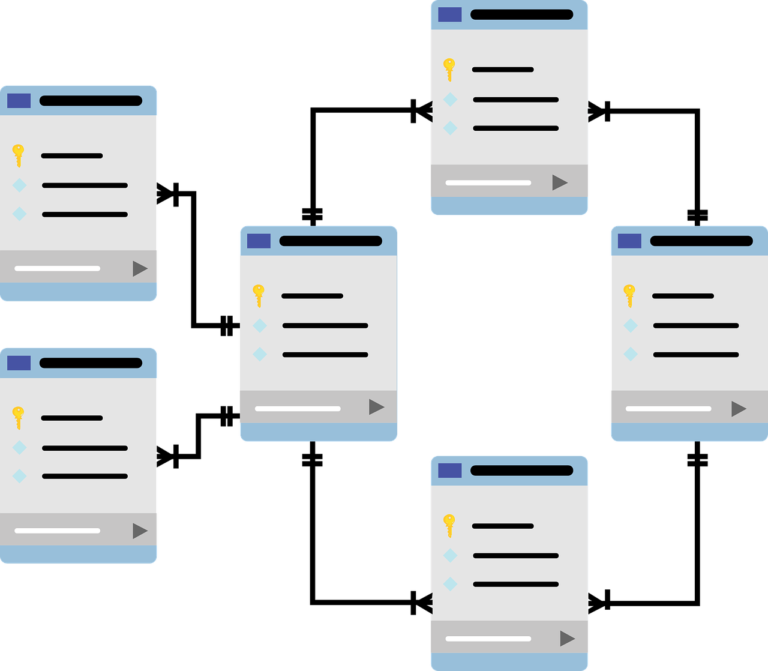
Introduction
In today’s data-driven world, structured databases serve as the foundation for countless businesses and organizations. The ability to handle, manage, and analyze data is crucial. SQL (Structured Query Language) is the industry-standard language for managing and manipulating relational databases, allowing us to interact with data in a structured and efficient manner. This article provides a comprehensive overview of its various aspects, guiding you through the process of getting started with database management.
What is a Relational Database?
A relational database is a structured system used for storing and managing large amounts of data. Organized into tables consisting of rows and columns, it establishes connections between these tables using relationships based on shared values, ensuring data integrity and efficiency. This database model, queried primarily using the Structured Query Language (SQL), allows for complex data retrieval and operations, making it a foundational element for numerous applications and systems in today’s digital world.
What is SQL?
Structured Query Language, is a standardized programming language used for managing relational databases and performing various operations on the data stored within them.
IBM developed SQL in the 1970s, and it is widely employed by database administrators, developers writing data integration scripts, and data analysts seeking to set up and execute analytical queries. It employs simple, declarative statements to maintain data accuracy, security, and the integrity of databases, regardless of their size.
Advantages of SQL
Before delving further into SQL, it is essential to understand why SQL is the go-to language for database management. Here are a few reasons:
- Universality: SQL is universally accepted and virtually omnipresent in the realm of relational databases. Most popular relational database management systems (RDBMS) such as MySQL, PostgreSQL, Oracle and SQLServer utilize SQL.
- Versatility: SQL is not only used for querying data but also for creating and modifying database schemas, offering a wide range of functionalities.
- Efficiency: SQL queries enable the selection of data from multiple tables at once, reducing the time and computational resources required for manipulating datasets.
- Integration: SQL can be embedded in other languages, allowing users to leverage its power within host languages like Python, Java, or C#.
Core Concepts in SQL
Let’s delve into some fundamental concepts of SQL:
- Tables and Keys: SQL stores data in tables, where each table consists of rows and columns. Rows represent individual records, while columns denote the attributes of those records. Keys establish relationships between different tables.
- Queries: A query is a request for data or information from a database. The most common type of SQL statement is a query, which typically begins with the keyword SELECT.
- Schema: A database schema serves as a blueprint, outlining the logical configuration of all or part of a relational database. It provides the structure of the database, showcasing how everything is built and connected.
Commands
SQL commands can be divided into several categories, including Data Definition Language (DDL), Data Manipulation Language (DML), Data Control Language (DCL) and Transaction Control Language (TCL).
Here are some essential ones:
Data Definition Language (DDL): DDL commands are used to define and manage the structure of the database. Common DDL commands include:
- CREATE: Used to create database objects such as tables, views, and indexes.
- ALTER: Used to modify the structure of database objects.
- DROP: Used to delete database objects.
Data Manipulation Language (DML): DML commands are used to manipulate the data within the database. Common DML commands include:
- SELECT: Used to retrieve data from one or more tables.
- INSERT: Used to insert new data into a table.
- UPDATE: Used to modify existing data in a table.
- DELETE: Used to remove data from a table.
Data Control Language (DCL): DCL commands are used to manage user permissions and control access to the database. Common DCL commands include:
- GRANT: Used to grant privileges to users or roles.
- REVOKE: Used to revoke previously granted privileges.
Transaction Control Language (TCL): TCL commands are used to manage transactions within the database.
Common TCL commands include:
- COMMIT: Used to save changes made in a transaction.
- ROLLBACK: Used to undo changes made in a transaction.
Conclusion: SQL is a powerful tool for managing and analyzing large amounts of data stored in relational databases. By grasping the core concepts, syntax and it’s various commands, you can acquire the skills necessary to excel in database management. Begin your journey today and unlock the power to organize and extract insights from your data. Read more articles related to SQL here.
